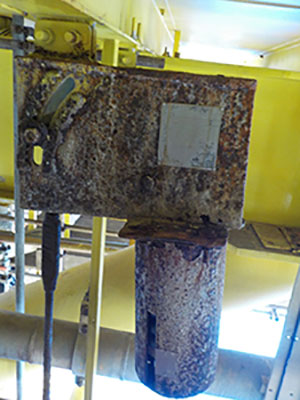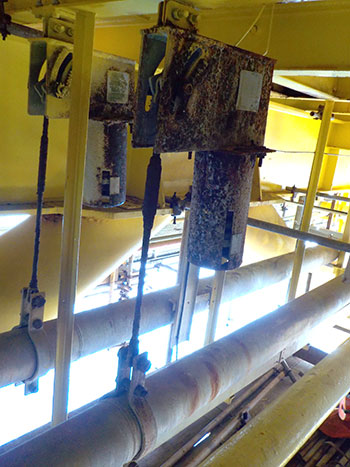 |
 |
The use of zinc and galvanizing has a long history. The early patents for hot-dip galvanizing were issued in France and England in 1836 and 1837. This technology was quickly adopted and was widely used in the late-1800s.
In the United States, we have bridges more than 100 years old which have galvanized structures. In addition, we have transmission towers and substation structures that are over 70 years old. A pipe rack at a petrochemical plant near Houston was studied after 28 years of service. Measurements of the zinc thickness remaining provided a forecast of another 60 years of service.
Any coating which provides a barrier to the moisture and oxygen in the air will help protect carbon steel from corrosion. A properly painted surface will provide a barrier, but it is subject to scratching from contact with hard objects.
Constant Spring Support Inspection:
Visually inspect each Constant hanger:
Search for signs of visual cracks, fractures, and corrosion of the spring casing and the following:
(1) beam attachment
(2) pin
(3) constant hanger attachment
(4) pipe clamp attachment
(5) weldless eye nut
(6) threaded rod
(9) spring coil
(10) Check if travel stops are removed
Check (7) turnbuckle (if present), locknuts (8) and other threaded items to ensure they are secured and fastened
Compare the position of the (10) coil with the hot/cold load indicator and operating range of the spring
Check the mobility of the (11) load column
Replacement Criteria:
– Signs of excessive corrosion or fatigue
– Rust damage of entire unit
– Modifications to operating conditions
– Consider condition of components (cam mechanisms, bearings, etc.)
Our field service team is available 24×7 for your quick-turn, emergency needs.
Call Field Service: +1-713-992-7048


